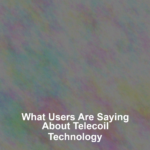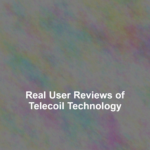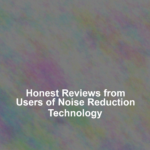Just as Alexander Graham Bell revolutionized communication with the invention of the telephone, telecoil technology has been touted as a game-changer for individuals with hearing aids.
YouG??ve likely heard about telecoils, but you may not have had the chance to sift through the noise of mixed reviews to uncover the truth of their performance.
In this discussion, weG??ll unpack the candid experiences of users who have integrated telecoil technology into their daily lives. From the whispered confessions at the back of a crowded theater to the intimate conversations at home, youG??ll learn how this technology stands up to real-world challenges.
Is the clarity of sound consistently improved, or do compatibility issues cast a shadow on its potential? Join us as we examine the unvarnished truth behind the telecoil testimonials, and find out if it truly hits the high notes of innovation or if users are left wanting more.
Understanding Telecoil Basics
Telecoil technology, often referred to simply as a G??T-coil,G?? is a small copper coil included in many hearing aids and cochlear implants that improves your listening experience in various environments. ItG??s a feature that might seem complicated, but youG??ll soon see itG??s quite straightforward and incredibly beneficial.
HereG??s how it works: a T-coil picks up magnetic signals from compatible sound systems and telephones. This means youG??re not just relying on the traditional microphone in your hearing device, which can be a game-changer in noisy places. Imagine youG??re in a bustling cafe or a packed theater; with a T-coil enabled, you can tap directly into the sound system, reducing background noise and making it easier to focus on what you want to hear.
YouG??ll find T-coils in public venues like churches, auditoriums, and airports, marked by a blue sign with a white ear symbol. When you switch your hearing device to the T-coil setting, youG??re connected to the loop system of the venue, and itG??s like having the speaker right next to you. So, next time youG??re struggling to hear in a crowd or on the phone, remember the T-coil might just be your best friend.
User Experience in Public Spaces
When you step into a looped venue with your hearing aidG??s T-coil activated, the difference in sound clarity can be astonishing. YouG??re no longer struggling to differentiate the words from background noise. ItG??s like the speakerG??s right next to you, delivering a personal performance. Users often describe this as a game-changer, especially in challenging acoustic environments like theaters, churches, or conference halls.
You mightG??ve missed out on nuances during lectures or performances before, but with the telecoil system, youG??ll catch every word. Imagine attending a play and hearing every whisper, every emotion-laden pause, without straining. ItG??s not just about volume; itG??s the quality of sound that improves.
In places like airports and train stations, where announcements are critical, you wonG??t be anxiously guessing your gate changes or departure times anymore. YouG??re in the loop, quite literally, and itG??s a relief to be on equal auditory footing with everyone else.
However, keep in mind, not all public spaces are looped. When they are, they mightnG??t always be well-maintained. ItG??s worth checking in advance which venues are equipped and ready to go. That way, youG??re not left out, expecting clarity and facing disappointment.
Telecoil Functionality at Home
While public venues offer remarkable experiences with telecoil technology, the benefits extend to your personal space, enhancing everyday listening within the comfort of your home. Imagine youG??re watching TV. With telecoil, you can directly stream the audio into your hearing aids, making dialogue crystal clear, without cranking up the volume for everyone else. ItG??s a game-changer for family movie nights.
YouG??ve got a landline phone with a telecoil-compatible loop. So when youG??re on a call, background noise fades away. ItG??s just you and the caller, as if youG??re in the same room. And if youG??re a music lover, your stereo system can connect to your telecoil-equipped hearing aids, immersing you in sound without the ambient distractions.
Also, consider your safety. Smoke alarms and doorbells can be looped into the system. YouG??ll never miss an alert, whether itG??s a visitor at the door or an emergency signal. ItG??s not just convenient; itG??s potentially lifesaving.
Users rave about these home applications, noting the ease with which they can now participate in activities that once felt frustrating. Telecoil hasnG??t just improved their hearing; itG??s enhanced their quality of life at home. IsnG??t that something worth tuning into?
Compatibility and Connectivity Issues
Despite these advantages, you might encounter some hiccups with telecoil compatibility and connectivity that can affect your seamless experience. YouG??ve probably been there, all geared up to enjoy a concert or a meeting, and then, you face a snag. HereG??s what you might run into:
-
Not all venues are telecoil-friendly. YouG??re excited to use your telecoil at your favorite theater, but alas, they havenG??t installed a loop system. ItG??s a bummer, but itG??s still a reality in many places.
-
Interference can be a buzzkill. Sometimes, even in a telecoil-equipped venue, youG??ll get that annoying buzz or hum. It could be due to electronic interference or poor installation of the loop system. This can really take away from your experience, leaving you frustrated.
-
Tech hiccups with your hearing aids or cochlear implants. YouG??ve made sure the venueG??s got the tech, but what about your device? Occasionally, your hearing aids or implants mightnG??t switch to the telecoil setting automatically. You mightG??ve to fiddle around manually, which can be quite the hassle, especially when youG??re trying to focus on the event.
Overall Satisfaction and Verdict
Considering these potential hiccups, letG??s now evaluate whether users find telecoil technology meets their expectations and if itG??s worth the investment.
The talk around telecoils among users is a mixed bag. You might find some who swear by its utility in theaters and places of worship, where sounds are directly streamed to their hearing aids, providing a clarity they hadnG??t experienced before. For them, the technology is nothing short of revolutionary, transforming their listening experience in public spaces.
On the flip side, youG??ve got users whoG??ve run into compatibility issues and find the added expense hard to justify. TheyG??ve faced situations where the telecoil mode is rendered useless due to a lack of T-coil-compatible systems in their vicinity. For these individuals, the promise of seamless audio connectivity remains unfulfilled, tipping the scales towards dissatisfaction.
Your verdict, however, hinges on your lifestyle and the prevalence of T-coil-friendly environments you frequent. If youG??re often in places with compatible loop systems, the investment could be a game-changer. But if youG??re not, or youG??re looking for a more universally applicable solution, you might end up feeling that your investment in telecoil technology didnG??t quite hit the mark.
Conclusion
YouG??ve now seen how telecoil technology can transform your auditory experience, both out in public and at home.
While you might face some hiccups with compatibility, the overall feedback shows that users like you often find the clarity and connectivity worth it.
Embrace the change, and youG??ll likely join the chorus of users who wouldnG??t want to navigate a world abuzz with sound without their trusted telecoil-enabled devices.
ItG??s a verdict that speaks volumesG??loud and clear.









